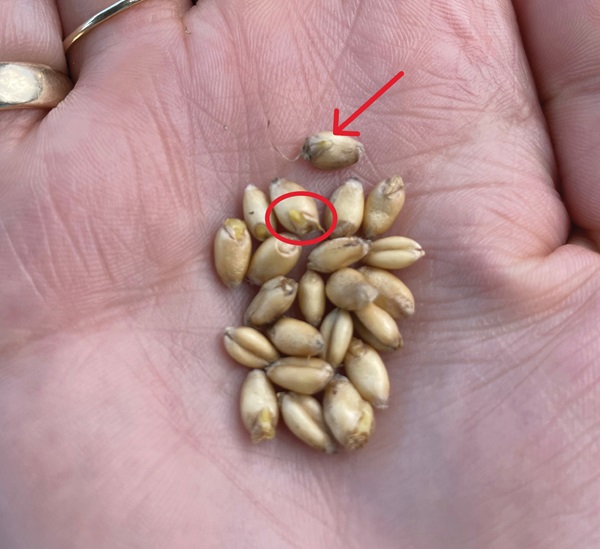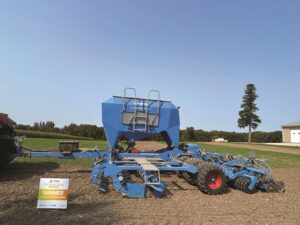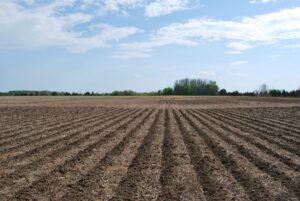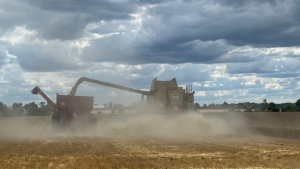Getting familiar with falling number
Agronomic information from Ontario's crop specialists

Ministry of Agriculture, Food and Agribusiness
What is a falling number?
Falling number is a standardized testing method for determining the amount of sprout damage in wheat. Wheat is ground and mixed with water in a test tube to create a slurry. The test tube is heated for 60 seconds, and a plunger is dropped. The plunger is timed to see how long it takes to fall to the bottom of the tube or a specified distance, and this number (in seconds) is the falling number.
Wheat is considered sound and satisfactory for most milling and baking processes with a falling number of about 300 seconds; however, levels as low as 250 can be acceptable to end users. While growers are given a grade based on sprouts, mills are increasingly looking at falling numbers as an indicator of wheat quality. As a result, growers are encouraged to review all contracts to ensure they are aware of falling number or any other quality requirements upon delivery of grain.
What causes low falling numbers?

winter wheat in 2024.
The two main causes of low falling numbers in wheat are pre-harvest sprouting and late maturity alpha-amylase (LMA) production. Cool, rainy conditions can initiate pre-harvest sprouting once wheat has reached physiological maturity (Figure 1). When there are multiple rain delays, there is an even greater risk for sprouting, even for varieties with good sprouting resistance. When pre-harvest sprouting occurs, alpha-amylase is produced, which converts starch into sugars that fuel seedling growth.
In addition to sprouting, low falling numbers can also be caused by late maturity alpha-amylase (LMA). LMA production is triggered by cold or heat shock during the later stages of maturity (26 to 30 days after pollen shedding). The specific temperature swing needed to induce LMA is not yet clear.
How can low falling numbers be prevented or managed?
The best defence against sprouting and low falling numbers is to harvest wheat as quickly as possible once it reaches maturity. Harvesting early and drying your grain is the most effective means of avoiding sprouting. Previous Ontario research showed that when harvest was delayed by two weeks, the amount of sprouted wheat increased by almost 10 per cent, and yield was reduced by almost four bushels/acre (Table 1).
Table 1. The impact of delayed harvest on sprouts in winter wheat. Johnson et al. 2011.
| Harvest Date | Yield (bu/ac) | Test Weight (lb/bu) | Sprouts (%) |
| July 13 | 92.4 | 62.0 | 0.0 |
| July 18 | 91.8 | 61.3 | 0.0 |
| July 21 | 91.7 | 60.4 | 2.3 |
| August 1 | 88.7 | 57.8 | 8.8 |
Selecting pre-harvest sprouting resistant wheat varieties can also help reduce risks. Red wheat tends to be more tolerant than soft white wheat. When planting soft white wheat, plant no more than what can be harvested in one day. Avoid mixing wheat with low and high falling numbers, and keep sprouted wheat or wheat with a low falling number separate from sound wheat. If storing wheat on-farm for later shipment, consider submitting a grain sample to a wheat testing lab for falling number analysis. •


























